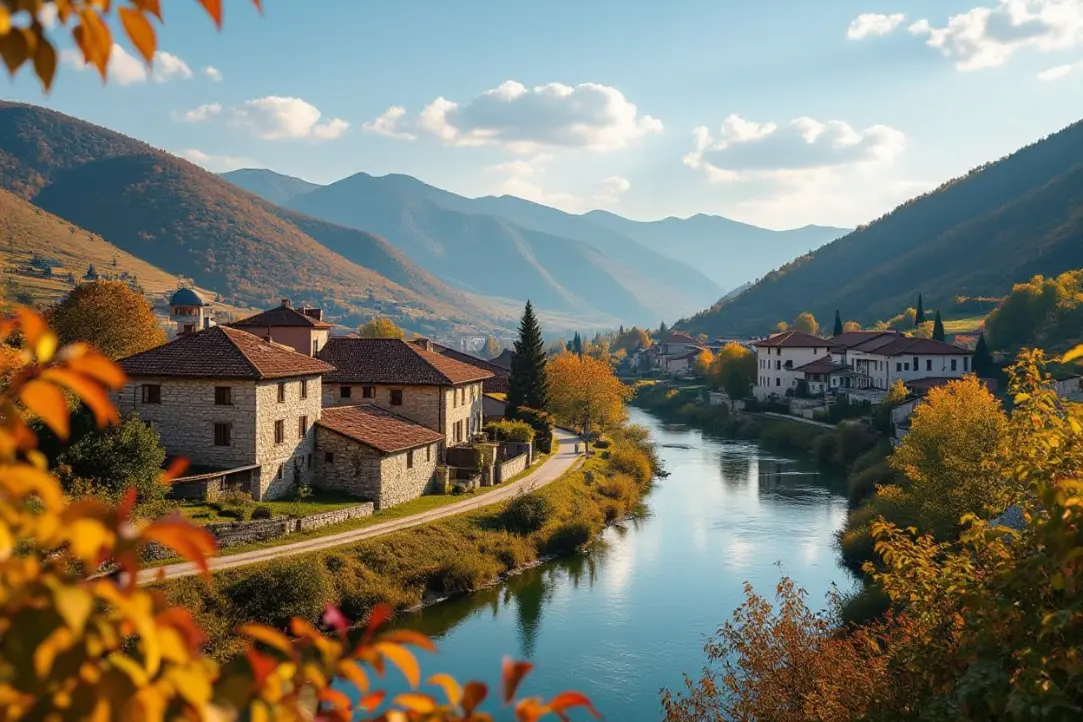Balkans Hidden Gems: Secret Places to Visit in Balkan Countries

You will find lesser-known towns, villages and islands across the Balkans that offer unspoiled cultural experiences and breathtaking scenery; this guide shows you where to go, how to access remote spots and what to expect from local customs, noting limited infrastructure and rugged access that can be dangerous if you are unprepared, so you can plan confidently to enjoy the Balkans Hidden Gems and authentic encounters.
Key Takeaways:
- Discover secluded islands and coastal villages where crystal-clear waters and traditional fishing life offer tranquil escapes from tourist crowds.
- Explore medieval towns and hilltop villages that preserve century-old architecture, artisan crafts, and authentic local cuisines.
- Venture into remote mountain hamlets for dramatic landscapes, alpine hiking, and encounters with rural customs and hospitality.
- Find off-the-beaten-path beaches and hidden coves that rival well-known resorts for natural beauty and privacy, making them a bucket list destination.
- Experience intimate cultural festivals, folk music, and regional culinary specialties that reveal the Balkans’ rich, diverse heritage.
- Seek out family-run guesthouses and agritourism stays for immersive local living, home-cooked meals, and storytelling by residents.
- Combine short hikes, boat rides, and scenic drives to link multiple secret spots into a bespoke itinerary of unforgettable vistas and authentic encounters.
Serene Shores: The Sailor’s Paradise of Lastovo Island
You’ll navigate an archipelago of beautiful places made of over 40 islets inside the Lastovo Islands Nature Park (est. 2006), with Ubli serving as the ferry gateway and Zaklopatica among the most sheltered anchorages.
Short hops between pebble coves let you sample multiple bays in a single day, while clear waters and stone harbors make Lastovo a sailor’s delight.
Watch the forecast closely—sudden bura gusts can make exposed anchorages risky, so choose well-protected coves or moor in marked harbors during your road trip through the beautiful places in the region.
Unveiling the Natural Beauty of Lastovo
Trails wind through fragrant maquis, pine stands, and terraced olive groves, leading from the stone-built village of Lastovo—lined with narrow alleys and numerous 16th–18th century chapels—to cliff-top viewpoints that reveal the scattered islets.
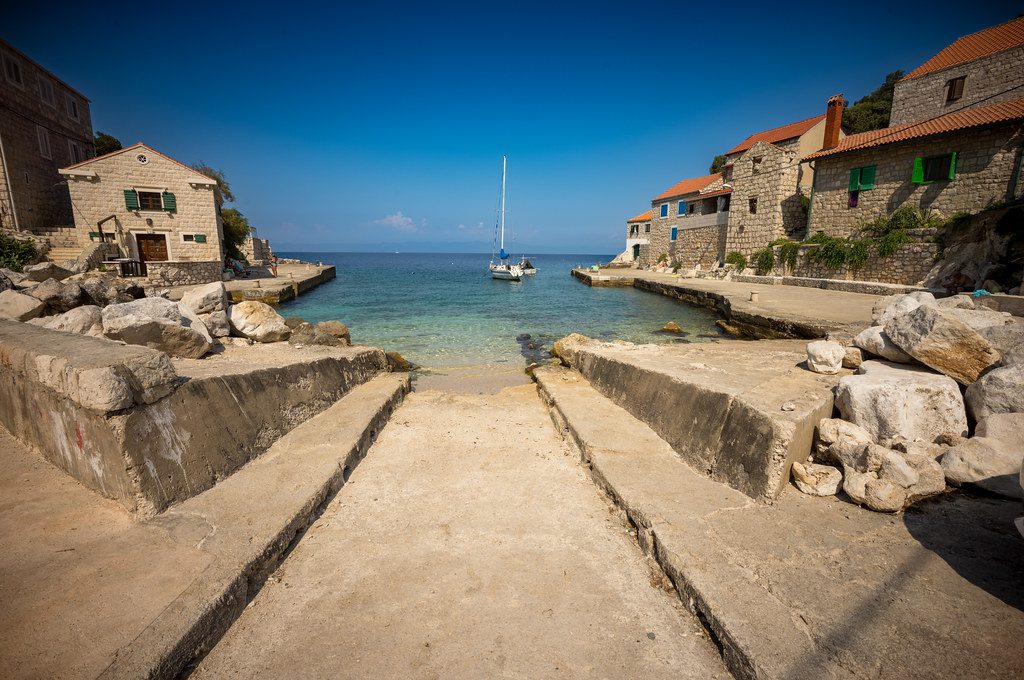
Snorkeling off secluded bays rewards you with rich marine life; short coastal hikes deliver panoramic vistas across the archipelago in under an hour from town, ideal for photographers and nature lovers.
Engaging with Local Traditions and Gastronomy
You can time your visit to catch the island’s masked spring carnival, the annual poklad procession, then sit down in a family-run konoba for dishes like octopus cooked under a peka and brudet fish stew.
Small harvests of olives and honey mean dining is intensely local; book ahead during July–August because only a handful of eateries serve tourists at peak season.
Join olive pressing in October or arrange a tasting of small-batch island wines and honey produced by local families—many will pour a sample of freshly pressed olive oil with bread so you can taste the difference.
Expect hearty multi-course meals highlighting foraged herbs, cured cheeses, and grilled lamb; nascent viniculture means bottles are limited, so reserve tastings directly with producers to secure an authentic household dining experience.
Uncharted History: The Ancient Ruins of Durrës
Walking among sun-bleached stones, you trace layers from a 7th-century BC Greek colony to a Roman hub on the Via Egnatia; the 2nd-century amphitheatre—one of the largest in the Balkans—sits beside excavated baths and mosaic pavements.
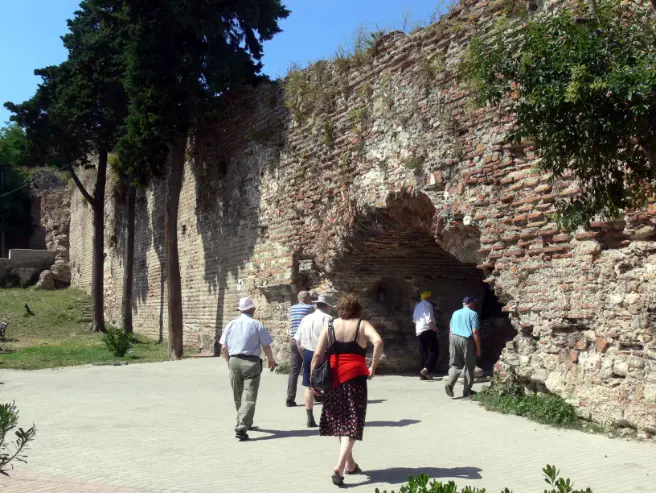
Archaeological trenches reveal streets and necropoleis, with finds displayed in the Archaeological Museum.
Keep awareness of uneven, exposed ruins and obey barriers to protect both the site and your safety.
Discovering the Archaeological Significance
Excavations expose a continuous sequence: Greek foundations, Roman urban planning, Byzantine walls, and later Venetian repairs.
Key discoveries include the amphitheatre, bath complexes, and intricate mosaics that illustrate trade and daily life along the Via Egnatia; stratified displays let you follow roughly 2,700 years of occupation.
Local teams continue targeted digs, so you can often observe active archaeology and conservation techniques in action.
Experiencing the Fusion of Cultures in Modern Durrës
Stroll the waterfront and you encounter Ottoman-era mosques, a Venetian tower, and Italianate façades from the interwar period mingling with contemporary cafés; sample fresh catch at the harbor market, sip espresso on the promenade, and absorb the mixed architectural vocabulary.

Expect peak-season crowds and navigate around busy ferry traffic near the port when planning visits.
Neighborhoods like the old bazaar and the compact city center embed ancient mosaics into modern streetscapes, while the amphitheatre and waterfront host summer concerts and cultural events that showcase living traditions.
You can reach Durrës in 30–40 minutes from Tirana, making day trips convenient; consider staying in nearby Golem for quieter beaches.
Engage with fishmongers for grilled calamari, qofte, and local recipes to see how Greek, Roman, Ottoman, and Italian influences continue shaping daily life.
Enclave of Traditions: The Timeless Charm of Gjirokastër
You wander narrow, slate-roofed streets past hundreds of Ottoman-era stone houses that cascade down the hill toward the Drino valley, where Gjirokastër’s UNESCO-listed center (inscribed in 2005) preserves unique defensive architecture.
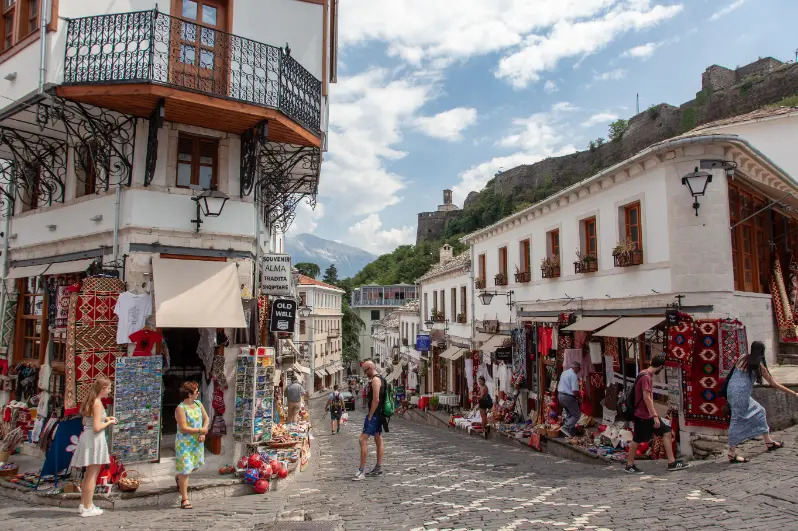
Nearby lesser-known stops like Libohovë and Përmet give you hot springs, castle ruins, and dramatic canyons, while steep cobblestones demand sturdy shoes—slippery inclines can be hazardous—and reward you with panoramic views and intimate, centuries-old village life.
Exploring the UNESCO Heritage Sites
You climb to the fortress ramparts of Gjirokastër Castle to study the layers of medieval and Ottoman fortification, tour the military exhibits, and trace the town’s stone bazaars where traditional houses with characteristic arched windows and carved doors date from the 17th–19th centuries.
The town hosts a national folklore festival on a regular cycle, so plan visits around performances of polyphonic singing, armored weddings, and live craft demonstrations to see living heritage in action.
Local Crafts and Culinary Secrets
You find artisans hand-forging filigree jewelry, weaving woolen kilim, and curing charcuterie in village smokehouses; street vendors sell homemade raki and spoon-sweet gliko alongside byrek stuffed with local sheep cheese.
Trace recipes that blend Ottoman and Balkan flavors—olive oil, walnuts, mountain herbs—and seek taverns where simple menus spotlight regional produce and wood-fired ovens.
Dig deeper by visiting family workshops on the town’s stone lanes to watch loom techniques passed down generations and sample house-made preserves: Permet’s gliko and Bënjë’s thermal-spa ham are local specialties.
Ask for a kitchen demonstration to learn how raki is distilled, inspect woven motifs for symbolic patterns, and barter directly with makers to support small-village economies while taking home genuinely rare souvenirs.
Breathtaking Heights: The Hidden Trails of Pirin National Park
High ridgelines around Vihren (2,914 m) reward you with razor-sharp views and access to over 176 glacial lakes.
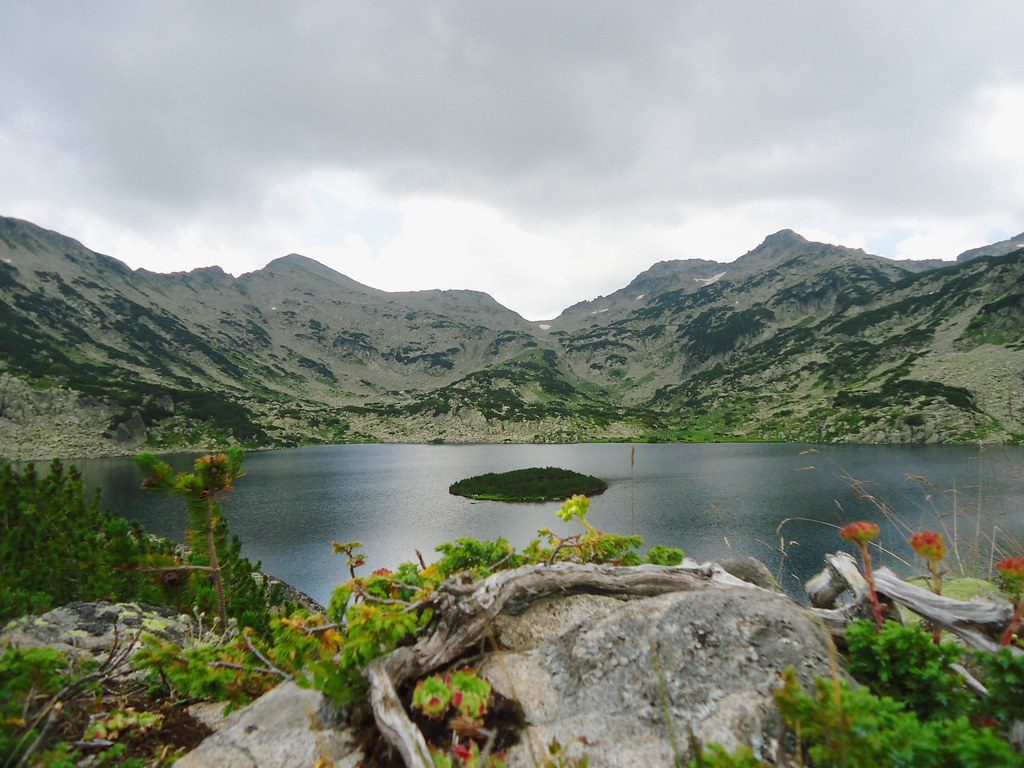
Trails thread down to lesser-known bases like Dobrinishte and the tiny town of Melnik — famed for its sand pyramids and local wines — offering cultural stops between ascents.
UNESCO-listed since 1983, Pirin, southwestern Bulgaria, hides single-track paths and shepherd trails that reveal panoramas you won’t find on the main routes.
Adventure Awaits: Trekking Off the Beaten Path
You can link multi-day traverses of 2–4 days between refuges such as Bezbog and Yavorov, tackling exposed sections like the narrow Koncheto ridge—fitted with a fixed cable—where a misstep on the knife-edge can be deadly.
Early starts to beat afternoon storms, hut-to-hut navigation, and sidetrips to secluded cirques make these routes richer and far less crowded than typical Bansko itineraries.
Underappreciated Flora and Fauna of the Region
You’ll encounter ancient stands of Macedonian pine (Pinus peuce), dense beech woods, and alpine meadows bursting with late-June blooms.
Mammals include chamois and large predators like the brown bear and gray wolf, usually elusive but present; raptors such as golden eagle patrol the crags, turning ridge-line watches into rewarding wildlife encounters during your walking tour.
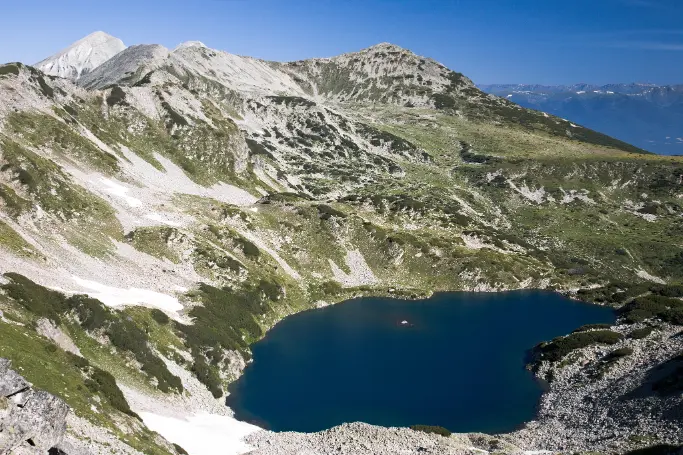
Survey routes near Tevno Lake and the Kamenitsa group concentrate biodiversity, with over 1,000 plant species recorded across the massif, including Balkan endemics.
You can spot chamois at dawn on north-facing slopes and locate golden eagles near 2,200–2,500 m ridgelines; practice low-impact observation because bears and wolves are protected, and human disturbance directly affects their survival.
Enigmatic Vistas: The Secluded Beauty of Studen Kladenets
You’ll find Studen Kladenets in Kardzhali Province, a reservoir carved from the Arda River and known as one of the Arda cascade’s three lakes; narrow gorges, reed-fringed coves, and low-lying islands create a patchwork of secluded shorelines.
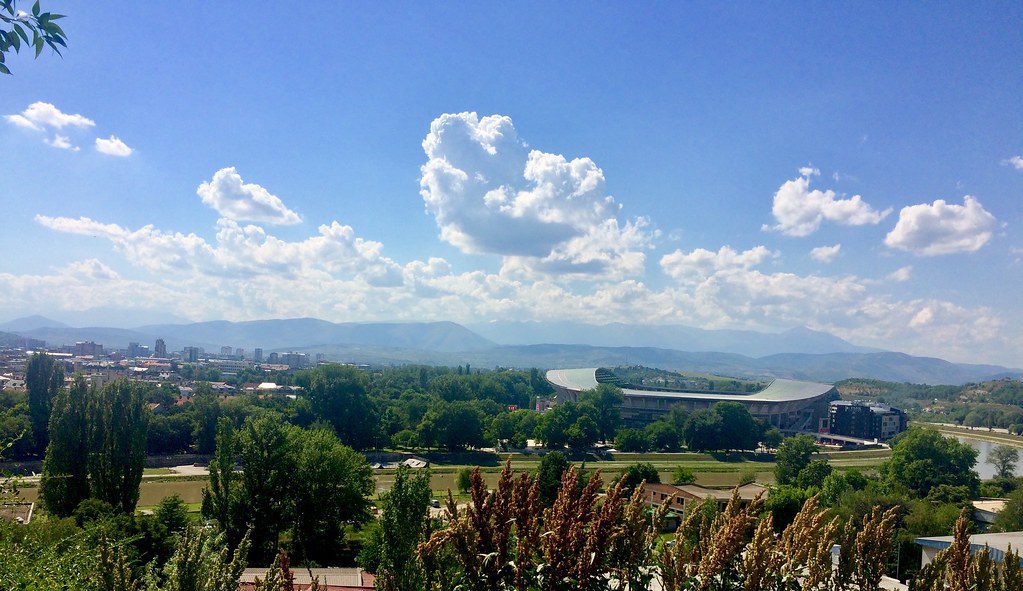
Expect quiet bays ideal for kayaking and trout fishing, sparse tourist facilities, and dramatic views of the Rhodope foothills—plus cliffs and sudden weather shifts that demand caution if you explore off-trail.
The Allure of Unexplored Landscapes
Hidden inlets open to panoramic ridgelines where you can follow short trails to lookout points; several footpaths trace the old shepherd routes and skirts of the reservoir, offering 360° vistas of limestone escarpments and pine-scented valleys.
You can portage a kayak between coves to reach nearly private bays; bring a compass and map, since many tracks are unmarked and phone coverage is often patchy, increasing the sense of wilderness on your road trip.
Cultural Insights from Isolated Communities
Local villages of a few hundred souls preserve blended traditions—Pomak customs, Bulgarian Orthodox practices, and Ottoman-era cottages—so you’ll witness unique rituals, seasonal harvests, and polyphonic singing in intimate settings.
Hospitality is genuine and hands-on: hosts offer home-cooked trout and chacapuri-like pies, while medical services are limited, so plan accordingly and carry important.
Dig deeper, and you can arrange homestays or join a shepherd for a day to learn cheese-making, woodcarving, or basket weaving; seasonal festivals still follow lunar-agricultural cycles and draw elders who remember Thracian and Ottoman-era stories.
Nearby archaeological sites such as Perperikon and small mountain chapels give context to local lore, and you’ll often pay in cash at family-run stalls selling smoked trout, herbs, and embroidered textiles—an immersive, hands-on cultural experience.
To wrap up
Drawing together the highlights, you can chart a route through the Balkans’ lesser-known towns, villages, and islands where quiet streets, age-old traditions, and dramatic coastlines reward explorers willing to go off the beaten path.
Your journey will reveal authentic markets, secluded beaches, and local festivals that redefine travel expectations, giving you unforgettable cultural encounters and landscapes few tourists ever see.
FAQs: Secret Destinations in the Balkans You Never Knew Existed
What are the hidden gems in the Balkans?
The Balkans are filled with hidden gems that offer a unique experience away from the typical tourist spots.
Places like Berat in Albania and the Rugova Canyon in Kosovo showcase the natural beauty and cultural heritage of the region, making them perfect for a trip to the Balkans.
Which countries are considered part of the Balkans?
The Balkan countries include Albania, Bosnia and Herzegovina, Bulgaria, Croatia, Kosovo, Montenegro, North Macedonia, Romania, Serbia, and Slovenia. Each of these countries offers stunning landscapes, historical sites, and beautiful cities worth visiting.
What is the best place to visit in the Balkans?
Choosing the best place to visit in the Balkans can be subjective, but many travelers recommend Dubrovnik in Croatia for its medieval architecture and Adriatic beaches.
However, places like the Plitvice Lakes National Park and the city of a thousand windows, Berat, are also top contenders on any walking tour of beautiful places in the Balkans.
Are there any national parks in the Balkans?
Yes, the Balkans are home to several national parks, including the Plitvice Lakes in Croatia and the Durmitor National Park in Montenegro.
These parks offer hiking trails, breathtaking waterfalls, and diverse wildlife, making them ideal for nature lovers.
What are some beautiful beaches in the Balkans?
The Adriatic coast features some of the best beaches in the Balkans. Popular options include the beaches of Budva in Montenegro and the hidden coves around Dubrovnik.
These spots are perfect for relaxation and enjoying the stunning turquoise waters.
Can you recommend any hiking spots in the Balkans?
For hiking enthusiasts, the Balkan Peninsula offers numerous trails.
The hiking trails in the Rugova Canyon and the national parks in Montenegro and Albania provide breathtaking views and encounters with the region’s natural beauty.
What cultural heritage sites should I visit in the Balkans?
The Balkans are rich in cultural heritage, with UNESCO World Heritage Sites such as the Old Town of Dubrovnik and the historic city of Berat.
These sites offer a glimpse into the region’s diverse history, influenced by Ottoman and medieval traditions.
Is Kosovo worth visiting?
Absolutely! Kosovo is often overlooked but is home to vibrant cities like Pristina and beautiful natural landscapes, including the Rugova Canyon.
It’s a hidden gem in the Balkans that offers unique experiences and a rich cultural heritage.
What makes the cities in the Balkans unique?
Cities in the Balkans, such as Sarajevo and Belgrade, are unique due to their blend of historical influences and modern developments.
The streets of the old town often reveal a fascinating mix of Ottoman and European architecture, making them a captivating place to explore.
How can I plan a trip to the Balkans?
When planning a trip to the Balkans, consider creating an itinerary that includes a mix of cultural sites, natural parks, and hidden gems.
Research the best places to visit in each country and allocate time for local cuisine and experiences that showcase the region’s rich cultural tapestry.




